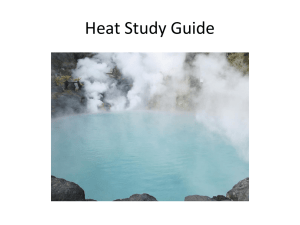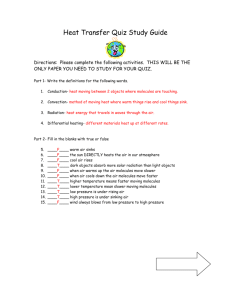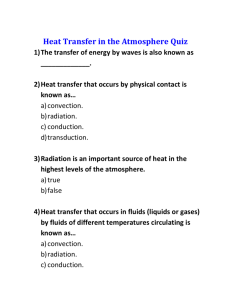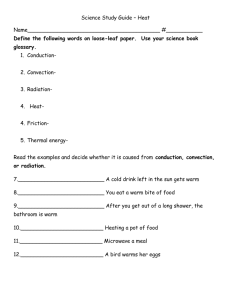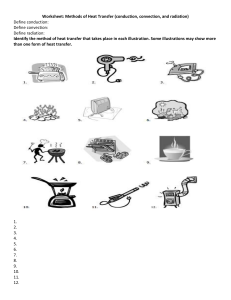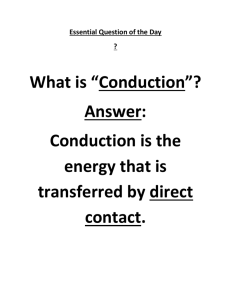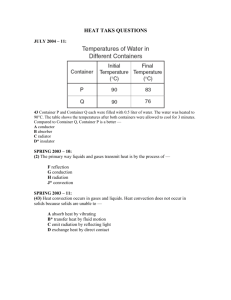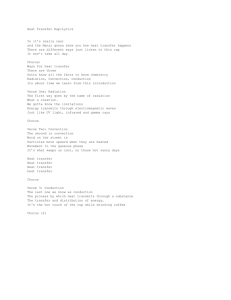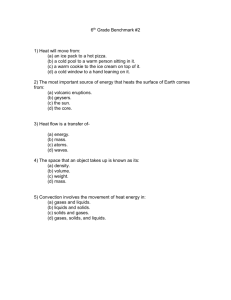UNIT - TYPES OF HEAT TRANSFER adapted
advertisement
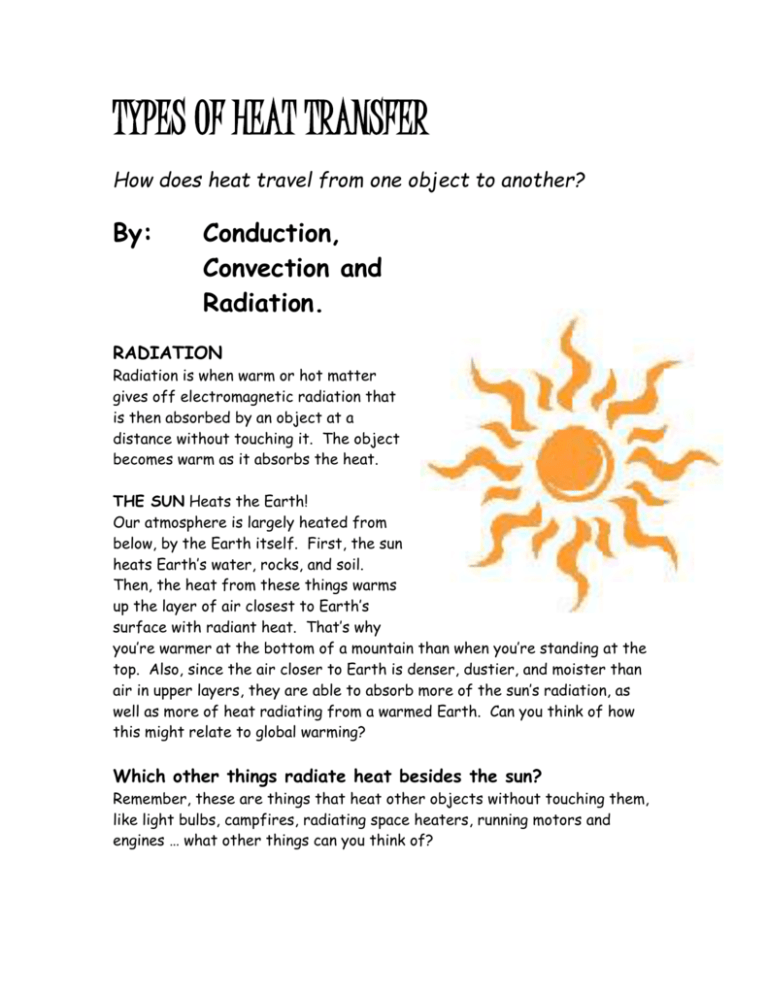
TYPES OF HEAT TRANSFER How does heat travel from one object to another? By: Conduction, Convection and Radiation. RADIATION Radiation is when warm or hot matter gives off electromagnetic radiation that is then absorbed by an object at a distance without touching it. The object becomes warm as it absorbs the heat. THE SUN Heats the Earth! Our atmosphere is largely heated from below, by the Earth itself. First, the sun heats Earth’s water, rocks, and soil. Then, the heat from these things warms up the layer of air closest to Earth’s surface with radiant heat. That’s why you’re warmer at the bottom of a mountain than when you’re standing at the top. Also, since the air closer to Earth is denser, dustier, and moister than air in upper layers, they are able to absorb more of the sun’s radiation, as well as more of heat radiating from a warmed Earth. Can you think of how this might relate to global warming? Which other things radiate heat besides the sun? Remember, these are things that heat other objects without touching them, like light bulbs, campfires, radiating space heaters, running motors and engines … what other things can you think of? CONVECTION Convection is how heat moves from one area to another in liquids and gases. For example, warm, moist air rises to create clouds, while pushing down cold air to Earth. Warm ocean water travels north and south from the warmer regions and pushes the cold water around, creating currents. You may notice that when you open a window on a cold day, the warm air escapes (warm air and water pushes around cooler air and water). Most ovens work by radiating heat, but a convection oven (above left) works with hot air currents. CONDUCTION Conduction is when objects or materials are touching the vibrating molecules from the warmed object transfers this energy to the cooler object. For example, a hot stove burner will transfer heat to the pot sitting on top of it, which will then transfer heat to the water inside. Conduction is the main way for heat to travel through solid materials. All solid materials conduct heat, but some do a better job than others. Generally, metals are good conductors while porous (material with plenty of spaces between its molecules) materials are not. Styrofoam is a good example of a poor conductor, but it’s a good insulator. Good conductors of electricity, such as metal wire (especially copper), are usually good conductors of heat. Some materials are better than others. This man will feel more heat through the marble tile than through the piece of carpet because the carpet is more porous (full of air); however, the carpet is a better insulator. Check for Comprehension Name and describe the three methods of heat transfer. _________________________________________________________ _________________________________________________________ _________________________________________________________ _________________________________________________________ _________________________________________________________ _________________________________________________________ _________________________________________________________ _________________________________________________________ _________________________________________________________ _________________________________________________________ _________________________________________________________ _________________________________________________________ _________________________________________________________ _________________________________________________________ _________________________________________________________ _________________________________________________________ _________________________________________________________ Look up your answers to Question 4 in the last lesson. List your sources of heat again and name the type of heat transfer that applies. _________________________________________________________ _________________________________________________________ _________________________________________________________ _________________________________________________________ _________________________________________________________ _________________________________________________________ _________________________________________________________ _________________________________________________________ _________________________________________________________ _________________________________________________________ Bonus Questions: What kinds of heat transfer do you see with the Galilean thermometer? Use the back of this sheet, if necessary. _________________________________________________________ _________________________________________________________ _________________________________________________________ _________________________________________________________ _________________________________________________________ _________________________________________________________
